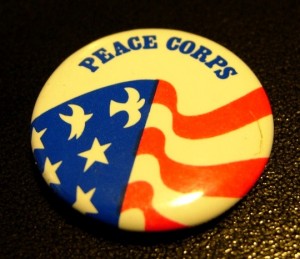
Courtesy of Todd Hryck
On September 22, 1961 President John F. Kennedy signed the Peace Corps Act, which officially created the organization known for sending young Americans to help developing nations. While most textbooks credit President Kennedy with the formation of the Peace Corps, the true architect behind its establishment was his brother-in-law, Robert Sargent Shriver. Though Shriver had no diplomatic or international policy experience, under his leadership the Peace Corps established programs in 55 countries with nearly fifteen thousand volunteers. In her article, “Sargent Shriver’s Role and the Creation of the Peace Corps,” Jenna Banning argues that Shriver’s natural charisma and undaunted perseverance became the driving forces behind the unlikely creation of the new aid organization. Shriver personally campaigned to win congressional approval for the Peace Corps even when the president and his closest aides proved indifferent to the project. Banning utilizes Shriver’s own words to help explain his mindset and analyze his under-appreciated tactics. She also employs period newspaper articles to help present a careful study of Shriver’s motivations and hard-fought lobbying effort.
This article has been adapted from a paper originally submitted to Professor Pinsker’s US Diplomatic History class (History 382) during fall semester 2009.
Go to “Sargent Shriver’s Role in the Creation of the Peace Corps” by Jenna Banning
